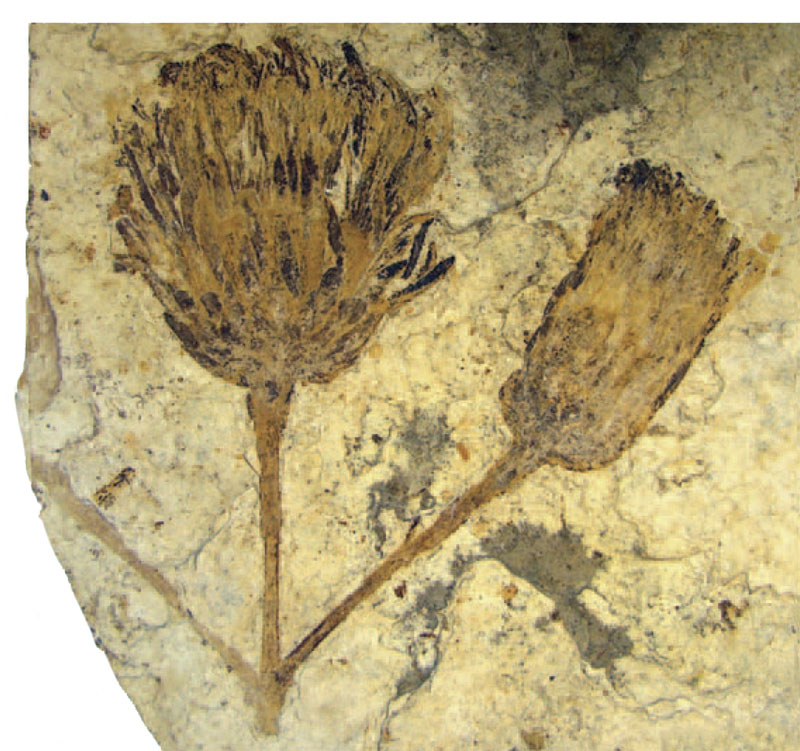
BARREDA, V.D. et al. Science. 2010
This 47-million-year-old fossil may be the oldest relative of the daisy, sunflower, and lettuce ever foundBARREDA, V.D. et al. Science. 2010In 2010, the journal Science described a 47-million-year-old fossil of a plant from the Asteracea family. Found near the city of Bariloche in Argentina, it suggests that the predecessors of the daisy, sunflower, and lettuce, among 23,000 other species in the family, may have emerged in Patagonia. The rare fossil was stored at the Bernardino Rivadavia Argentine Museum of Natural Sciences (MCNBR) in Buenos Aires. It was later stolen, along with other objects, including the complete skeleton of a hadrosaur (an herbivorous dinosaur measuring 8 to 10 meters long and 4.6 meters high), dinosaur eggs, and an ammonite (an extinct marine animal). In November, some 6,400 artifacts were returned to the museum after being recovered by Argentine and Spanish customs authorities. The items were illegally sent to Spain in September 2020, probably by a man from the Argentine province of Rio Negro, who claimed he was moving to Europe. The authorities in Rio Negro were alerted to the situation, but the artifacts had already left the country. “It is a source of great pride to be able to return our heritage to its place of origin,” said customs director Guillermo Michel in a statement issued by the Argentine National Council for Scientific and Technological Research (CONICET) (Science, September 24, 2010; CONICET Newsletter, November 14).
Republish